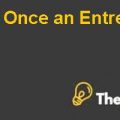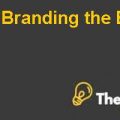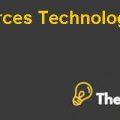
Q1) Are the structure, size and composition of the Lehman Brother’s board appropriately? Do you think the board has sufficient knowledge in Lehman's business sectors? Anything else you feel problematic about the board?
Lehman Brothers was the fourth major investment banking company in the United States back in 2008. As per the balance sheet, they were having assets of around $650 billion to $700 billion worth. The board of directors was literally inexperienced in comparison with diversified investment banking portfolio in the financial sector. The board somehow failed to stop an expanding portfolio of increasingly toxic securities and commercial real estate. During the years 2000 and 2007, the risk committee that has a critical role to play, met only twice a year. The compensations were remarkably massive as compared to the experience and expertise of board members. Mr. Richard has worked as a director since 1990 and he is 61 years old, hence, he received an enormous amount of $34,382,036 as total compensation. Similarly, other members of the board were also paid extremely handsome compensations, which ranged around $325,000 to $400,000. Some of the board members were quite competitive like Mr. Christopher Gent, who was the CEO of the Vodaphone group. Being an investment firm such experiences don’t have a massive role to play. The board was based on 11 members who have been the parts of the company for many years. The size of the board was quite appropriate to run such organization. There were six committees of the board which have multiple roles to play. The audit committees were as follows.
The structure was actually based on the one tier board structure that is a US model. Eight out of ten board members were independent directors, who actually met the standards of the New York Stock Exchange. On overall scale, the board was based on structural standards and there was nothing unusual. All the members have a diversified experience, but they possess a significant lack of experience on financial issues and analysis (Kehoe, 2004).
|
Structural Attribute |
Lehman brothers |
|
Chairman |
Richard S. Fuld |
|
CEO |
Richard S. Fuld |
|
Number of Members |
10 |
|
Number of CEO/Chairman/President |
3 |
|
Independent board Members |
8 |
Q2) Describe the performance of the Board prior to the critical bankruptcy decision described in the case - especially regarding actions taken since Lehman closed its sub-prime mortgage unit? Do you think the board fulfills its duties and responsibilities appropriately regarding Lehman’s aggressive growth strategy and its action when the sub-prime market collapsed? Was the Board planning and ready for possible alternatives and crisis situations?
The performance of the board’s directors was not completely up to the mark and they were not even ready for possible alternatives and crises. There are certain aspects to a crash that can play a role in a company’s failure. The role of the culture in the company, the interaction of senior management and the board, the risk management unit and the tools they used were somehow inappropriate, which resulted in a massive failure that met the best practices and regulatory standards. The decision regarding the aggressive growth was taken back in 2006, which was made to keep focus on commercial real states and subprime market. The decision sounds unsupportive because Lehman Brothers borrowed a great deal of money to make risky loans; which took its overall leverage ratio up to 30 times under stockholder’s equity of the company. The board of directors was slow in judging the possible downfall. Instead of pulling the money back, they actually decided to make it double on its bets and then they looked forward to make gigantic profits by buying from the declining housing market. As the time passed, the bet that was made in the housing market proved to be wrong. U.S’ 2nd biggest subprime lender, New Century Financial Corporation filed for Bankruptcy by April 2007 (Guarino, 2008). Decision of closing the sub=mortgage unit was good because a major crisis was expected soon. Finally, the board took a wise decision of closing its subprime unit, and immediately booked an after tax charge of $25 million, which was followed by a goodwill write down of $27 million. Up to some extent this decision was quietly supportive, but still the company retained many of such types of loans on its book.
Q3) Do you think Mr. Kaufman’s suggestion of reducing the firm’s annual dividend to $0.05 per share is an efficient way to preserve capital at that time?
The firm’s liquidity pool at the end of that third quarter was $42 billion as compared to $45 billion at the end of the second quarter. Yes in the crisis situation, it was a very effective way to preserve capital by reducing the annual common stock dividend of $0.05 per share from $0.60 per share in the year 2007. This reduction to $0.05 was actually equal to $0.0125 per share per quarter. This massive reduction of $0.55 would have resulted in massive capital preservation.................
This is just a sample partial case solution. Please place the order on the website to order your own originally done case solution.
In 2008, the U.S. financial system is in crisis and Lehman Brothers went from the main wall Street investment bank to insolvent institutions. It was a swift end to the firm, which dates back more than 150 years ago. What would the legacy of the company? And how, if at all, was his work changed the course of American history? "Hide
by Tom Nicholas, David Chen Source: Harvard Business School 21 pages. Publication Date: February 16, 2010. Prod. #: 810106-PDF-ENG










